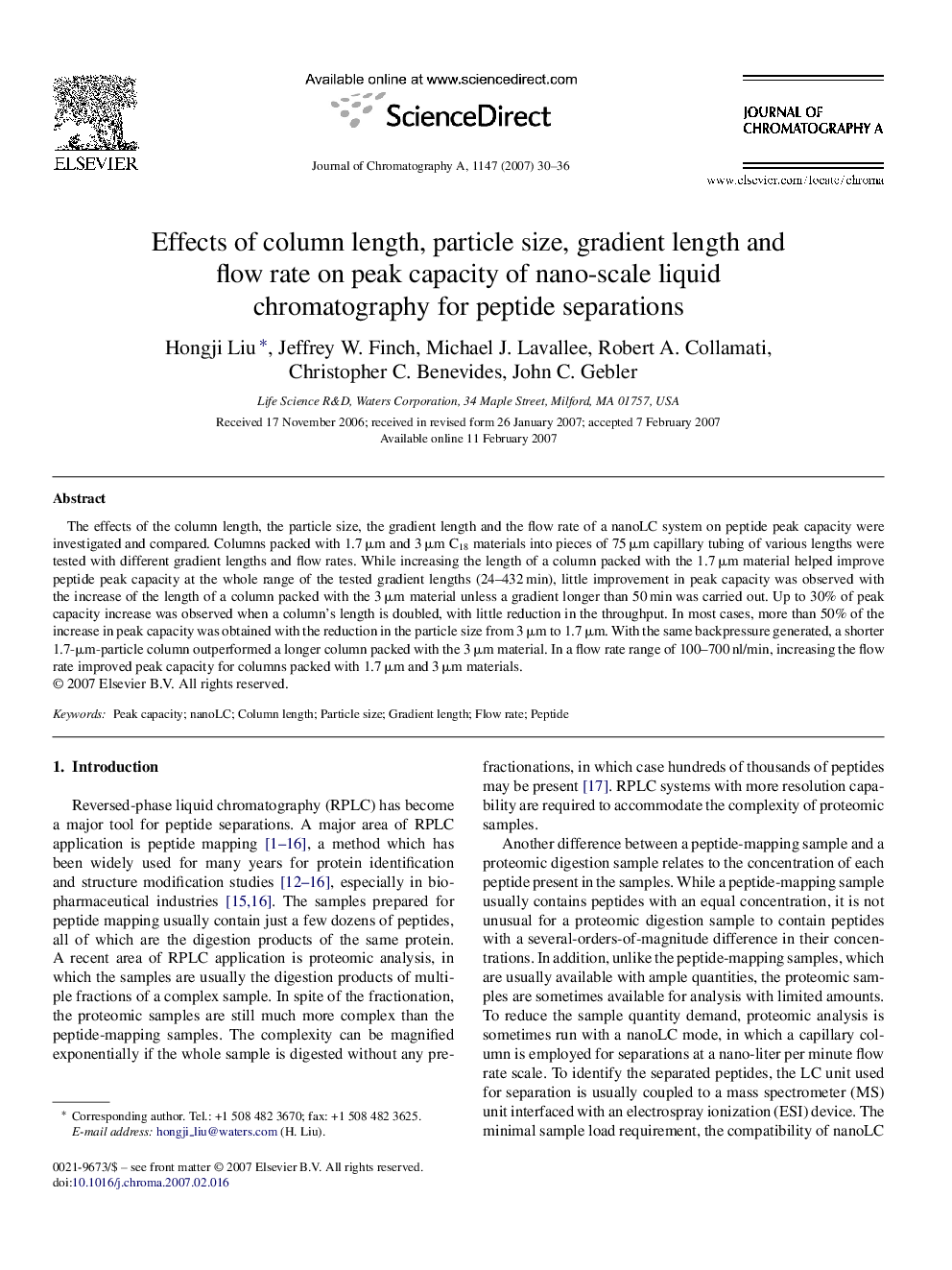| Article ID | Journal | Published Year | Pages | File Type |
|---|---|---|---|---|
| 1207849 | Journal of Chromatography A | 2007 | 7 Pages |
The effects of the column length, the particle size, the gradient length and the flow rate of a nanoLC system on peptide peak capacity were investigated and compared. Columns packed with 1.7 μm and 3 μm C18 materials into pieces of 75 μm capillary tubing of various lengths were tested with different gradient lengths and flow rates. While increasing the length of a column packed with the 1.7 μm material helped improve peptide peak capacity at the whole range of the tested gradient lengths (24–432 min), little improvement in peak capacity was observed with the increase of the length of a column packed with the 3 μm material unless a gradient longer than 50 min was carried out. Up to 30% of peak capacity increase was observed when a column's length is doubled, with little reduction in the throughput. In most cases, more than 50% of the increase in peak capacity was obtained with the reduction in the particle size from 3 μm to 1.7 μm. With the same backpressure generated, a shorter 1.7-μm-particle column outperformed a longer column packed with the 3 μm material. In a flow rate range of 100–700 nl/min, increasing the flow rate improved peak capacity for columns packed with 1.7 μm and 3 μm materials.
